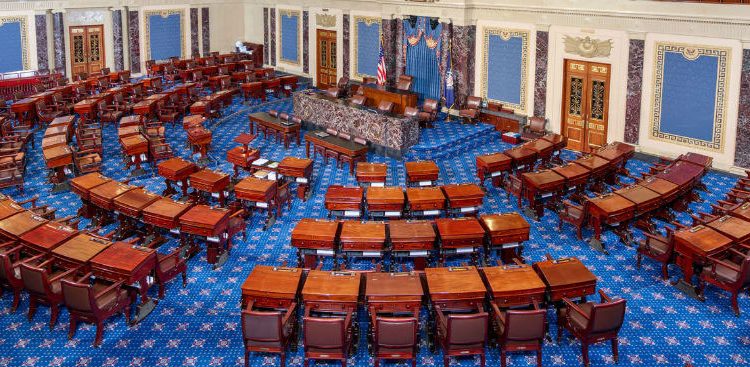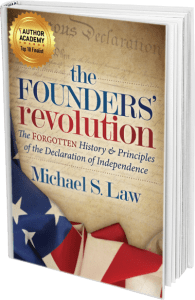Article II, Section 4 of the Constitution states, “The President, Vice President, and all civil Officers of the United States, shall be removed from Office on Impeachment for and Conviction of, Treason, Bribery, or other high Crimes and Misdemeanors.” In this the Constitution is clear. What is also clear in the Constitution is that the House of Representative as the sole power of impeachment and the Senate the power to try all impeachments. In the case of the Senate, when sitting for trial of the President, the Supreme Court Chief Justice presides.
The genius of the Framers can be seen here. First, the people’s representatives inquire into the crime, acquire the evidence and witnesses both for and against the president. Then they decide based all the evidence and witnesses both for and against the president whether to impeach and warrant a trial by the Senate. In other words, the people decide that he ought to be tried for crimes. In the case of the House, a simple majority decides whether or not to impeach.
Next, the Senate hears the case, along with the Supreme Court Chief Justice, and decide, based again on the presented evidence and witness testimonies both for and against the president whether to convict the president. While it typically doesn’t happen, the Chief Justice is to preside, similar to how judges decide in court trials, whether or not testimonies or evidences are admissible, ensuring that the prosecuting managers from the House can fully present their case and that the President can fully present his case and ensuring that the rights guaranteed in the Constitution and the Bill of Rights have not been violated nor will be violated. Just because a person is elected into office does not mean that his rights may be infringed upon by the process in either house of Congress.
All this is what I mean by the genius of the Framers. First, the representatives of the people impeach. Then the representatives of the states in the Senate (originally elected by the several state legislatures) try the president with the Supreme Court Chief Justice presiding. In this way, the executive branch head, the president, is convicted or acquitted by both branches of the federal government, which includes, indirectly, a majority of the people and two-thirds of the several states of the United States and a judge that was presidentially appointed and approved with consent by the states. This was a check upon check upon check to remove the president. Basically, it ensures that many powers must be abused or used properly all at once, in order to remove the president either justly or unjustly. While it is possible that each step along the way and the Constitutional processes can be abused by all the players involved, with so many checks it is much less likely.
Let us take up the case of President Donald J. Trump. I shall start with the articles of impeachment. Article 1 alleges and abuse of power in attempting to get Ukraine to help in an investigation into a political opponent, whose own statement would warrant an investigation into his conduct. The accusation against the president is that it was for his own personal gain in the forthcoming 2020 elections. This article ignores the president’s constitutional requirement to see that all laws are faithfully executed. There is no exception to alleged crimes by political opponents. And there is no crime that prevents the president from fulfilling his responsibilities even if it benefits him personally, especially when it benefits the nation and ensures that no individual is above the law.
The known corruption of Ukraine is enough cause for any president to ensure that funds are properly used or withheld if corruption continues. With the statement of his political rival being that unless a prosecutor was fired, no money would be sent to the Ukraine, the prosecutor being fired, which prosecutor was investigating corruption, there was enough for the president to withhold funds from Ukraine until corruption was fixed.
This charge against the president was not fully vetted nor can it be legitimate based on the Constitution. Treason? No mention in the article. Bribery? Again, no mention. Other high crime or misdemeanor? No mention of a crime that could go to court. And the same can be said of the next article.
Article 2 alleges an obstruction of Congress. This article falls flat on its face in two ways. First, Congress consists of two houses, the Senate and the House. One cannot obstruct Congress if only half of a Congress is being obstructed. Second, a demand for documents or testimony by subpoena without a warrant, which involves an alleged crime backed up by testimony or evidence, is a violation of the President’s 4th Amendment rights to be secure in “[his] persons, houses, papers and effects.” To be short, the House was simply looking for something, anything to impeach the president on. Now if we move to the House’s point that there was an accuser, then they could make the demand, but only if the courts agreed that documents must be turned over or witnesses must testify unless the president voluntarily turns them over. The courts had no play in this case because the House never went to court over the “obstruction.”
But let us take up the process of the House. An accusation was made against the president by an unknown individual. The facts are that the president was not allowed by the House to defend himself, was not informed of the cause of the accusations (not to mention the accusations continued to change) nor able to be confronted by the witnesses (accuser) against him, not able to have compulsory process for obtaining witnesses in his favor or to have defense counsel. That is four violations of the president’s 6th amendment rights under the Constitution (if you count each time the accusations changed as one violation), not to mention the attempted 4thAmendment violations, mentioned in the previous paragraph, and the 5th Amendment violation of due process of law. Any court would dismiss this case before the ink was dry on the impeachment articles.
Hamilton explained the dangers of what we have seen the House in Federalist 65 over 200 years ago, which unfortunately, he and other Framers foresaw “In many cases it (impeachment and trial) will connect itself with the pre-existing factions, and will enlist all their animosities, partialities, influence, and interest on one side or on the other; and in such cases there will always be the greatest danger that the decision will be regulated more by the comparative strength of parties, than by the real demonstrations of innocence or guilt.”
That is why the Senate must acquit. They must acquit because of the numerous violations of the president’s constitutional rights by the House in order to impeach. No crimes can legitimately be pointed to in either article of impeachment. Thus, they must acquit on those grounds, too. In reality, the fact that can easily be pointed to is that the president was doing his duty as president to execute the laws as required by the Constitution. To put it bluntly, article 1 impeaches him for following the Constitution, as does article 2. It is clear that these articles can be applied to the House for abuse of their power and for the obstruction of the Constitution. Those members of the House that vote for this impeachment must be removed by the people that live in the respective districts for abuse of power and for violation of their oath to protect and defend the Constitution.


